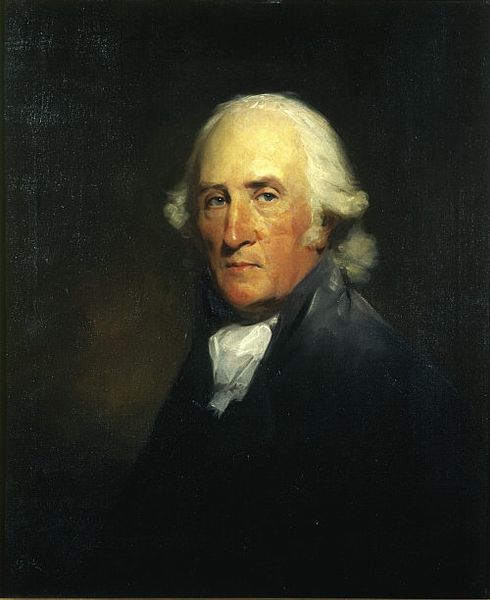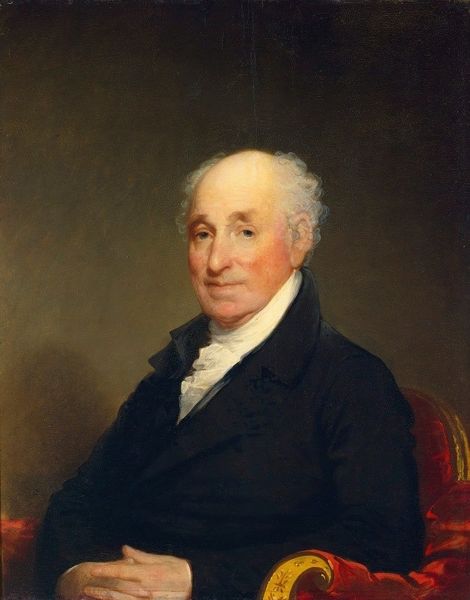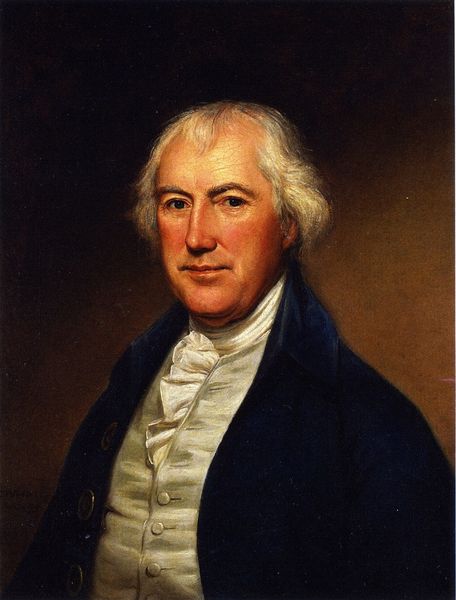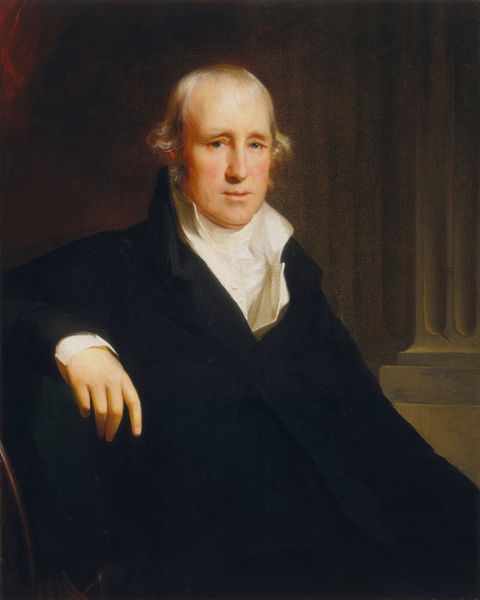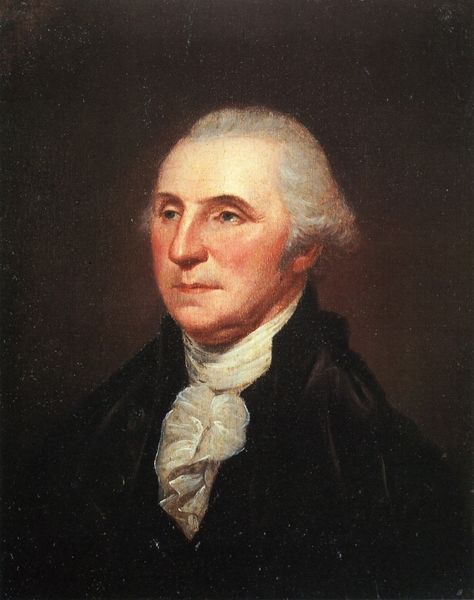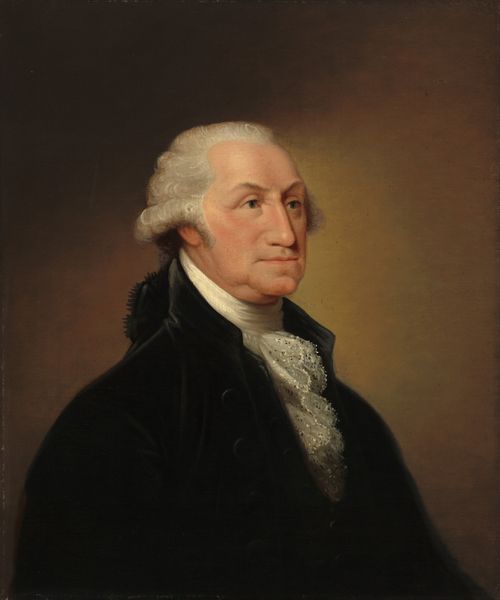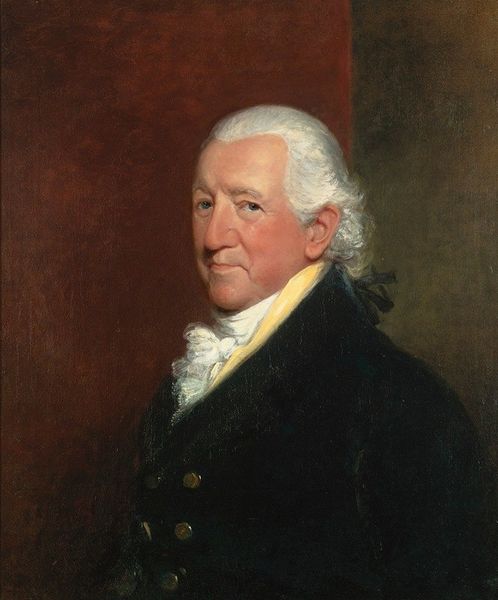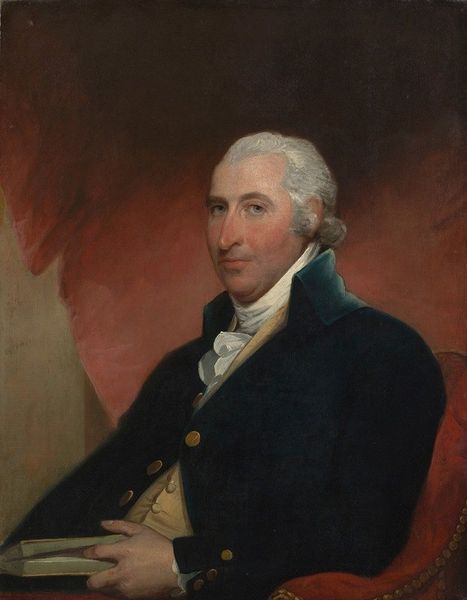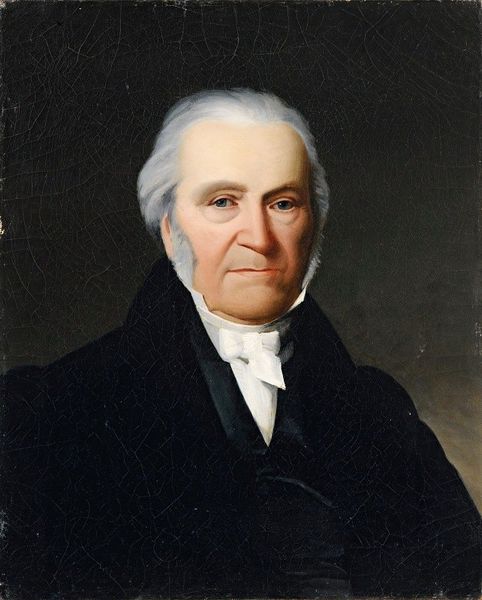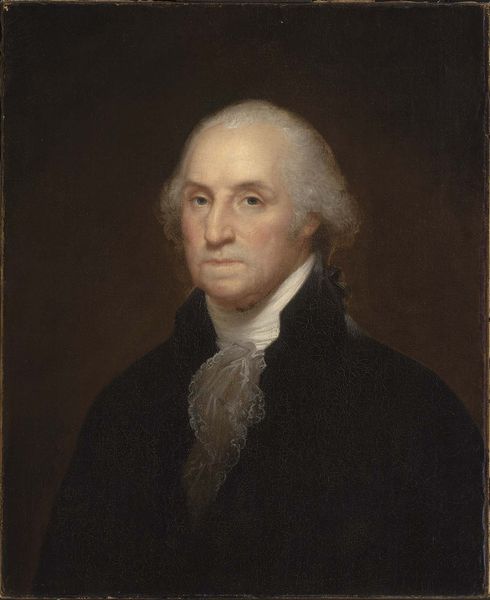
#
portrait image
#
portrait
#
portrait reference
#
portrait head and shoulder
#
portrait drawing
#
facial portrait
#
portrait art
#
fine art portrait
#
celebrity portrait
#
digital portrait
Copyright: Public domain
Charles Willson Peale painted this portrait of Edward Burd, a prominent lawyer and prothonotary from Pennsylvania. The artwork, rendered in oil, encapsulates the identity and status of its subject within the socio-political context of late 18th and early 19th century America. Burd's gaze, both direct and slightly aloof, speaks to the self-assuredness expected of a man of his position. The detailed rendering of his clothing and the rich red chair symbolize wealth and authority. But these symbols were built on a foundation of inequality, namely the forced labor of enslaved people and the displacement of Native populations. Peale, a staunch patriot, used portraiture to immortalize the leaders of the new republic. Yet, the absence of any overt reference to the revolutionary ideals leaves us questioning the complexities of the time. Does this portrait celebrate individual success, or does it subtly critique a social order that perpetuated racial and economic disparities? Ultimately, the portrait invites us to reflect on the values and contradictions embedded within early American society.
Comments
No comments
Be the first to comment and join the conversation on the ultimate creative platform.
